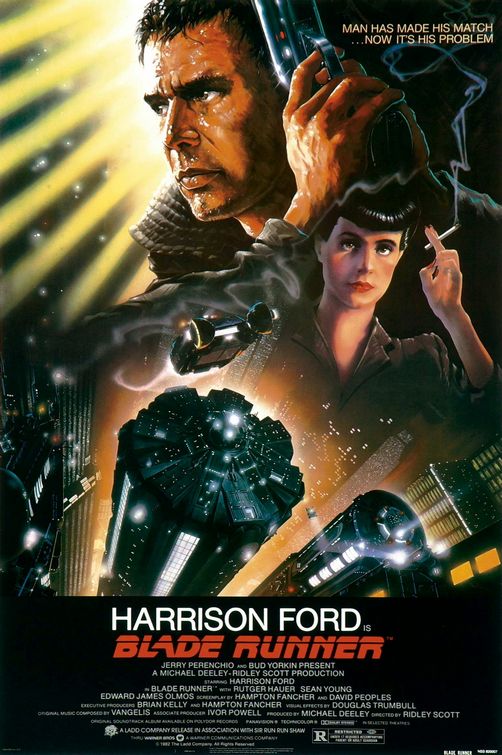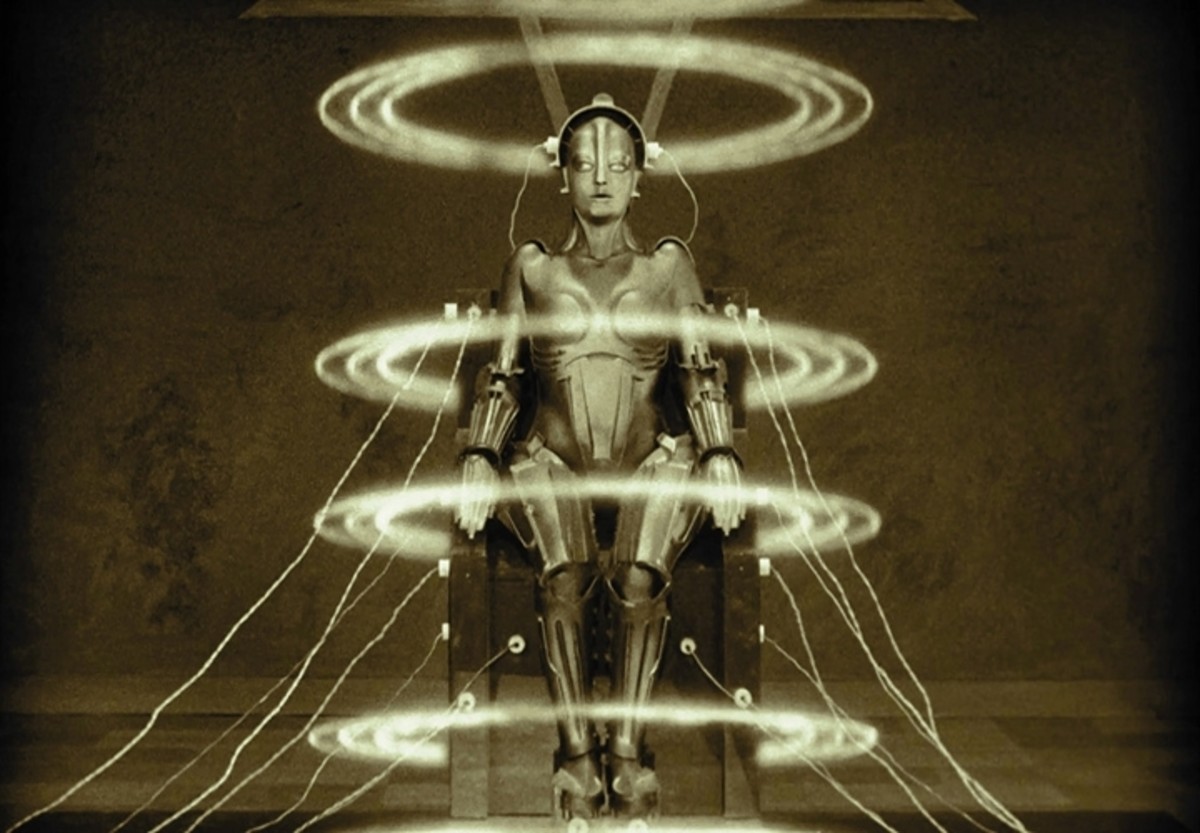Movie Parables: Blade Runner

I Want More Life
Director Ridley Scott’s 1982 film adaptation of Philip K. Dick’s science fiction novel Do Androids Dream of Electric Sheep? (1968) failed to draw rave reviews from movie critics and audiences alike at its premier showing. Yet over time, Blade Runner drew a cult following and claimed its coveted place as one of the greatest science fiction films ever made. The story is set in Los Angeles in the year 2019. The city has evolved into a non-ecofriendly, dystrophic melting pot of multi-cultures in collision. Aside from her perpetual smog, she is also polluted with corporate advertising, flying automobiles, and replicants—human-like androids created for use in dangerous off-world colonization.
The story follows Rick Deckard, a retired Blade Runner, a hired gun whose job it is to hunt down and terminate rogue replicants. Due to his much-needed talent, his former police supervisor forces Deckard back into active duty. Meanwhile, a quartet of replicants escape the off-world colonies and return to earth. Their objective is to try to override their four-year life span. Roy Batty, the space commando leader of this renegade band, sets out to find their maker Eldon Tyrell and the answer to prolonging their life. A desperate search ensues leading to the loss of human lives.
Batty finally confronts his creator in the Tyrell corporate headquarters saying, “It’s not an easy thing to meet your maker.” Tyrell asks, “And what can he do for you?” Batty replies, “Can the maker repair what he makes?” Tyrell inquires, “What’s the problem?” Batty answers, “Death.” And they go back and forth exploring every possible solution and scientific remedy to reverse the replicant’s expiration date. It’s a frustratingly futile attempt. Batty and his fellow replicants possess a specific strain that gave rise to a non-reversible mutation—like rats abandoning a sinking ship their time is almost up. They were doomed from the start. Tyrell tries to console Batty like a father receiving back his prodigal son saying, “The light that burns twice as bright burns half as long. And you have burned so very, very brightly, Roy.” The replicant rejects his ill-fated future and kills Tyrell in a fit of rage.
After eliminating the three androids, Deckard catches up to the replicant ringleader in a struggle that ends with him questioning his own humanity and the ethics of his blade running profession. The final encounter finds Deckard hanging on for dear life in an attempt to escape Batty. He falls short of his jump to an adjacent building as he holds fast to a slippery cornice in the wind and rain. With one hand he dangles in the air over the side of the building. It’s a long, long drop to certain death. He holds on with everything he’s got. Batty follows suit by leaping across the gap of two skyscrapers without any effort. He now looms over his prey. He sees the desperation in Deckard’s eyes—his adversary’s desire to live in spite of his hopeless situation. Although it is within his power to kill him, something comes over Batty. He feels the common bond that humans and replicants share—the precious love for life. Batty’s hand is lightning fast. He catches Deckard the moment he loses his grip. He safely sets his would-be assailant at the edge of the rooftop. Then Batty sits crumpled before Deckard sensing that his time is almost at hand. They stare at each other without saying a word. Finally Batty breaks the silence: “I’ve seen things you people wouldn’t believe. Attack ships on fire off the shoulder of Orion. I watched c-beams glitter in the darkness at Tannhäuser Gate. All those moments will be lost in time like tears in rain. Time to die.” Batty’s head hangs limp as the last drop of life is drained from his body. Deckard sits across him soaking wet. He is still reeling from the shock of being left alive by this revenge-seeking replicant.
Among the many hard questions about religion, the ethics of genetic manipulation, racism and sexism, and human interaction with technology one stands out: “What does it mean to be human?” The answer lies with our Creator. According to Genesis 1:26, we were made in God’s image and created to last forever. The reality of death remains an unnatural foreign concept. Every time a loved one passes away, we instinctively reject or refuse to accept the experience. Why? Because deep down inside we know that this isn’t the way it’s suppose to end. Life should not be about loss. There has got to be more to life! Yet this utopian existence wrapped up in eternity eludes us on earth. Even the Apostle Paul cries out in Romans 7:24, “Who will rescue me from this body of death?” Roy Batty tasted life for four years and demanded from his maker, “I want more life.” But the mutated alteration built into his system deprived him of living forever.
Biblically speaking, sin entered the world through one man as death infected and spread to the human race (Rom 5:12). Every man and woman, born after the fall of Adam, is sentenced with a shelf life. The dominion of death had a field day until the kingdom of God arrested life from its cruel clutches. Having compassion for a widow mourning her dead son, Jesus brought the man back to his mother by restoring his life. Despite the laughter after he assessed the condition of the dead girl, Jesus called her spirit back to life. When Lazarus died, Jesus not only wept, but also brought his dear friend back to life. Reading these stories, we see dead people and how Jesus defied their expiration dates—allowing them a taste of his coming kingdom where there will be no end.
So our Maker poured out the gift of life through the death of one man, Jesus Christ, and dealt with sin once and for all (Rom 5:18). Where the first Adam failed, the last Adam triumphed (1 Cor 15:45). Whoever has the Son of God has eternal life (1 John 5:11-13). Do you want to live forever? Jesus said, “I am the resurrection and the life. Those who believe in me, even though they die, will live, and everyone who lives and believes in me will never die. Do you believe this? (Jn 11:25-26) “Where, O death, is your victory? Where, O death is your sting?” (1 Cor 15:55) The grave is denied and death is deprived of its power. In Christ, we will not expire but live forever.
Blade Runner (The Ladd Company, 1982) written by Hampton Fancher and David Webb Peoples (based on the novel “Do Androids Dream of Electric Sheep? by Philip K. Dick) and directed by Ridley Scott.
Copyright 2009, Gicky Soriano. All rights reserved.
More Movie Parables:
- Movie Parables: Apollo 13
My son and I, caught the Apollo 13 matinee feature in the mid-nineties. The movie was as intense and heart stopping as the critics said it would be. I believe I was just about my son’s age when this... - Movie Parables: Chariots of Fire
The true story of two British track athletes who compete in the 1924 Paris Summer Olympics was captured in the historic film drama Chariots of Fire. Harold Abrahams, a determined Jewish student, ran for... - Movie Parables: Gods and Generals
Jeffrey M. Shaara’s bestseller, Gods and Generals was made into an epic motion picture that charted the early years of the American Civil War as well as the rise and fall of legendary war hero “Stonewall... - Movie Parables: Les Miserables
The 1998 film, Les Misérables, translated “the Wretched Poor,” is based on the famous 1862 novel by French author Victor Hugo. The story revolves around an escaped prisoner by the name of Jean Valjean... - Movie Parables: Major League
I’m thinking about Jake Taylor, a baseball catcher playing for the Cleveland Indians in the 1989 film Major League. There was a time when he was one of the best in the game until his knees were shot-out. ... - Movie Parables: The Matrix
In the science-fiction film The Matrix, the real world has been taken over and controlled by the machines. The humans are prevented from knowing the unseen reality of their world. The machines use the minds... - Movie Parables: The Right Stuff
Has your world ever gotten rocked in the worst way? You wake up early one sunny morning, brew your best blend of coffee, and ease into your favorite recliner to read your Bible, the newspaper or a... - Movie Parables: The Thorn Birds
The Thorn Birds is the second most-watched miniseries in television history. This multi-Emmy award winning film epic was set in Drogheda, a sheep station located in the Australian outback between the years...
Recommended Reading:







